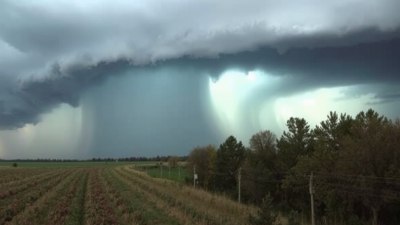How Ice Storms Paralyze Cities and the Science Behind Them
Explore the impact of ice storms on urban areas and the science that explains their formation and effects.

Image by travelscape on Freepik
Ice storms, a type of winter weather phenomenon, can have devastating effects on cities, causing widespread disruption and chaos. Understanding the science behind these storms can illuminate why they are so destructive and how cities can prepare for them. This article will explore the mechanisms of ice storms, their impact on infrastructure, and the policies and practices that can mitigate their effects.
The Formation of Ice Storms
Ice storms occur when precipitation falls as rain but freezes upon contact with cold surfaces, such as roads, power lines, and trees. This phenomenon typically happens when a layer of warm air is sandwiched between two layers of colder air. Often, a low-pressure system in the atmosphere can create this situation, leading to freezing rain. The essential condition for an ice storm to occur is that the temperature must be below freezing at the ground level while it remains above freezing higher up.
Temperature Gradients and Their Role
The temperature gradient is crucial in determining the type of precipitation. If warm air rises and remains sufficiently warm as it falls to the surface, rain can occur. Temperature inversions can lead to ice storms. A weather inversion traps cold air close to the ground, allowing warmer air above it to rain down. As the rain drops through the cold air layer right before reaching the ground, it becomes supercooled and freezes upon impact, creating layers of ice.
The Impact on Urban Areas
When ice storms hit urban areas, the impact can be severe. The accumulation of ice can weigh down tree branches and power lines, causing widespread outages. In cities, the disruption is far-reaching, affecting public transport, emergency services, and daily life. Roads can become treacherous, leading to accidents and paralysis in transport. Businesses may close, and schools may remain shut. The fear of falling branches and power outages can keep residents indoors, leading to an overall sense of disruption.
Infrastructure Vulnerability
Infrastructure is particularly vulnerable during ice storms. Roads coated with ice become unbelievably slick, making driving hazardous. Ice accumulation on power lines can lead to breakage, resulting in extensive power outages. According to estimates, an inch of ice can add up to 500 pounds of weight on power lines, leading to failures. Bridges and overpasses are particularly susceptible to icing because they cool more quickly than the surrounding areas, creating hazards even before roads become slippery.
Emergency Response Challenges
Emergency services face unique challenges during ice storms. Response teams may struggle to reach those in need due to dangerous road conditions. Injuries from slips and falls increase during ice events, placing additional strains on hospitals and emergency response units. Snow plows might become ineffective in removing ice, making the efforts of cities to stay ahead in managing the storm much harder.
Preventive Measures and Preparedness
Preparation is crucial for minimizing the impact of ice storms. Cities can invest in better winter infrastructure, such as heated roadways and more robust tree management policies to reduce the risk of falling branches. Public awareness campaigns on winter weather safety can encourage residents to prepare for emergencies and stay off the roads during and immediately after ice storms. Stockpiling de-icing agents and ensuring that road maintenance crews are adequately prepared are also vital for mitigating damage.
Climate Change and Ice Storms
Climate change may also play a role in the frequency and intensity of ice storms. Changes in global temperatures can alter weather patterns, potentially leading to fluctuations in winter storm severity. As the frequency of warm spells during winter increases, the likelihood of these icy conditions may evolve, leading to transformative impacts on urban areas that are not prepared for severe weather shifts.
Case Studies of Notable Ice Storms
Several ice storms throughout history highlight the destructive potential of these phenomena. The January 1998 ice storm in Eastern Canada and the Northeastern United States left millions without power for days. This storm caused an estimated $5 billion in damage, showcasing the reality of infrastructure vulnerability in urban settings. Similarly, the 2014 ice storm in Atlanta paralyzed the city, leading to traffic chaos and influencing local policies on emergency preparedness in winter weather.
Long-Term Urban Planning
Long-term urban planning can minimize the negative impacts of ice storms. Smart grid technologies can improve resilience in power systems, allowing for real-time monitoring of power lines. Urban planners should consider climate adaptability in designing infrastructure. Incorporating green spaces into urban landscapes can also help mitigate ice-related hazards, as trees provide shade and can help manage dew and moisture.
Community Preparedness Initiatives
Community preparedness initiatives can foster resilience against ice storms. Cities can organize community education programs on preparedness strategies, focusing on winter utilities and emergency kits. Establishing community centers as shelters during storms can provide immediate support to vulnerable populations, ensuring that people have access to warmth, food, and critical services during weather emergencies.
Ice storms are a significant threat to urban areas, resulting in disruptions to daily life and overwhelming emergency services. The science behind their formation is crucial to understanding how to prepare and respond effectively. Through improved infrastructure resilience, effective emergency response planning, and community preparedness, cities can mitigate the impacts of ice storms. Embracing these strategies will help urban areas become more resilient in the face of increasingly unpredictable winter weather.











